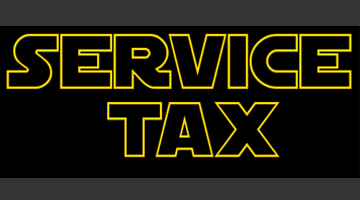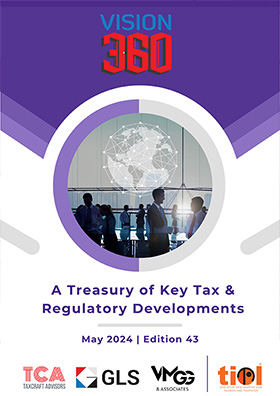ST - Rule 6(3)(c) of CCR, 2004 and Rule 6(1) of STR, 1994 should be read harmoniously - notwithstanding excess use of credit, consequence cannot lead to recovery of credit: CESTAT
By TIOL News Service
MUMBAI, JAN 29, 2019: THE appellants are providing cellular phone services and had availed CENVAT credit on various 'input services', 'capital goods' which were used for providing taxable services as well as exempted services, namely, "International roaming charges" and "Interconnect user charges".
Alleging that the Appellant had failed to maintain separate accounts in respect of various input services, capital goods used for exempted as well as taxable services and also since they have utilized credit in excess of 20% of the service tax paid in contravention of Rule 6(3)(c) of the CCR, 2004, demand notices were issued for recovery of credit of Rs.12.7 crores and Rs.42.4 crores for the period from October 2004 to March 2006 and April 2006 to March 2008, respectively with interest and penalty.
The adjudicating authority held that since the "International roaming charges" and "Interconnect user charges" became taxable w.e.f. 1.6.2007, the demand on the ground that these services were exempted services cannot be sustained. Also, it was held that the credit taken on capital goods used both for taxable as well as exempted services cannot be faulted as the same were not exclusively used for exempted services. The demand was, therefore, reduced to Rs.4,08,19,336/- and equal penalty was imposed.
The appellant is before the CESTAT.
It is submitted that for certain calendar months, while discharging service tax liability, they exceeded the limit of 20%, but for certain months, the utilization of credit was less than 20% of available CENVAT credit; that if overall utilization for the entire period in dispute is considered, there would not be excess utilization of CENVAT Credit than allowed under Rule 6(3)(c) of CCR, 2004. Furthermore, at best, they would be required to discharge interest on the excess utilization of CENVAT credit in discharging service tax liability; that the overall interest liability for excess utilization of the credit, if considered, on month to month basis would be Rs.87,44,723/- but if it is considered after adjusting the less amount of credit availed during certain months with that excess utilised than the interest liability would be Rs.40,09,682/- till both the services became taxable service.
The AR justified the demand.
The Bench considered the submissions and after extracting sub-clause (c) of rule 6(3) of CCR, 2004 and rule 6(1) of the Service Tax Rules, 1994 [Payment of Service Tax] inter alia observed -
+ Point of time of its utilization and the restriction on utilization of credit should be read harmoniously along with Rules framed under Finance Act 1994, so far as it relates to discharge of service tax liability.
+ Reading both the Rules, that is, Rule 6(3)(c) of CCR, 2004 and Rule 6(1) of Service Tax Rules, 1994, it can safely be inferred that at the time of discharging monthly service tax liability of output service provided, the assessee cannot utilize CENVAT credit more than 20% available in their Books of Accounts.
+ It cannot be at their whims and pleasure to utilize more than 20% of the available credit in one month on the ground that in the previous month they have utilized less than 20% of the credit in discharging their tax liability, even though such credit was available to them.
+ However, an assessee cannot be permitted to accumulate the limit of 20% for five months CENVAT credit and debit at one go the 100% credit in discharging their liability.
+ However, we are of the opinion that notwithstanding the excess use of credit, the consequence cannot lead to recovery of the credit being availed as per law and admissible to the appellant. [DBC Port Logistics, Order no. A/93191-93192/2016-WZB/STB dated 17.10.2016 refers.
+ Considering the fact of excess utilization of credit, this Tribunal observed that the assessee-appellant at best could be liable to pay interest on the excess amount of CENVAT credit utilized in discharging the service tax in lieu of cash. The aforesaid observation in our view is more or less akin to eligibility of credit on capital goods spread over to two financial years, allowing the assessee to avail 50% of the admissible credit in each financial year. Thus, the appellant would be required to discharge interest on the excess utilization of the cenvat credit in a particular month at the applicable rate.
+ We do not find merit in the argument of the appellant that while calculating the liability of interest, it should be computed taking into account both excess utilization as well as less credit availed during the period in dispute. There is no legal support to such method.
+ Also, we do not find any justification in imposing penalty or directing recovery of the credit, since the said Clause (c) of Rule 6(3) of Cenvat Credit Rules, 2004 restricts utilization of credit to the extent of 20% and not on availing of cenvat credit. Nevertheless, after 1.4.2008 the embargo of utilization of 20% credit has been removed and the assessee are entitled to utilize the credit accumulated on their books of accounts as on the date.
In fine, the matter was remanded to the adjudicating authority only for the limited purpose of calculating the amount of interest payable by the appellant for excess of the utilization of CENVAT credit in a particular month i.e. on month-to-month basis for the entire period in question.
The appeal was disposed of accordingly.
(See 2019-TIOL-329-CESTAT-MUM)














